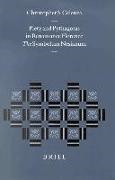Read more
This volume sheds light on the transitions in the intellectual life of Renaissance Florence in the last quarter of the fifteenth century. Its point of departure is a hitherto unedited Latin text, the "Symbolum Nesianum, whose original version was written by Giovanni Nesi, a follower of the famous Platonist Marsilio Ficino and then of the austere, fiery reformer, Girolamo Savonarola.
The first part of the book presents a lengthy introductory study that illuminates the text's cultural context. The second part offers a critical edition, translation, and commentary for the text.
The book will be of use to historians and to all scholars interested in the culture of the city often called the cradle of the Renaissance as it underwent one of its most difficult times.
About the author
Christopher S. Celenza, Ph.D. (1995) in History, Duke University and in Classical Studies, University of Hamburg (2001). Professor of Romance Languages, Johns Hopkins University. He has held fellowships from
Villa I Tatti, The American Academy in Rome, and
the Fulbright Foundation and has published on cu Renaissance humanism and philosophy.

